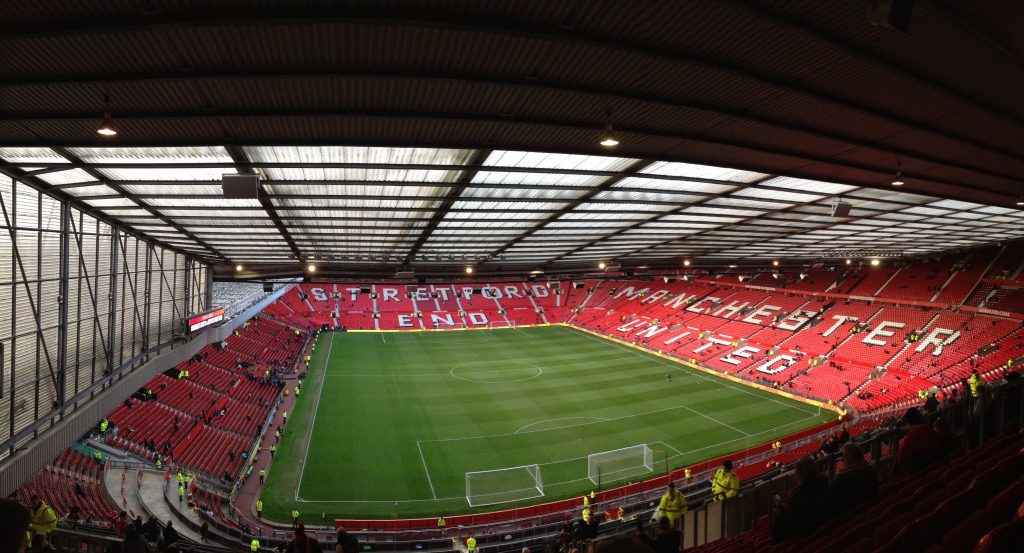The Definitive Guide to Premier League Pitch Sizes: Everything You Need to Know About Football Pitches in the Top League

Football, also known as soccer, is the most popular sport in the world. And in no other league is the passion for the game more intense than in the Premier League. With its rich history, fierce rivalries, and world-class players, the Premier League is the pinnacle of English football. But have you ever wondered about the dimensions of the pitches on which these iconic matches are played? In this article, we will explore everything you need to know about the football pitches in the Premier League, from their sizes and variations to their impact on player performance and spectator viewing. Is it the stadium of Fulham, Nottingham forest or may be Anfield?
So, let’s have a look which is the biggest English Premier league football pitch. Here is the list of everything that you need to know about a Premier league pitch and the football pitch size in general.
Pitch Dimensions in the Premier League
As we all know football pitches vary in size. Accoring to the international football association board, the suggested pitch size of 105 metres long. This is a standard size long in many football clubs. The football pitches in the Premier League are subject to regulations set by the Football Association (FA) and must adhere to specific dimensions. According to the FA guidelines, a football pitch must have a minimum length of 100 yards (91.4 meters) and a maximum length of 130 yards (118.9 meters). The width of the pitch must be a minimum of 50 yards (45.7 meters) and a maximum of 100 yards (91.4 meters). The pitch size in the Premier League is standardized to ensure fairness and consistency across all matches. However, there are variations in the pitch sizes due to the individual characteristics of each stadium.
Pitch Variations Across Premier League Clubs
While the pitch dimensions in the Premier League must fall within the set guidelines, there are subtle variations across different clubs. These variations often stem from the historical layout of the stadiums and the available space for development. For example, Fulham’s Craven Cottage has one of the smallest pitches in the Premier League, measuring around 110 yards (100.6 meters) in length and 74 yards (67.7 meters) in width.
On the other hand, Chelsea’s Stamford Bridge and Manchester United’s Old Trafford have slightly larger pitches, with dimensions of approximately 115 yards (105.2 meters) and 74 yards (67.7 meters) respectively. One of the peculiar pitch sizes in the Premier League is at Tottenham Hotspur Stadium. The pitch dimensions are exactly the same as the standard FA guidelines, with a length of 115 yards (105.2 meters) and a width of 74 yards (67.7 meters). However, due to the proximity of the stands to the pitch, it creates a unique atmosphere for both players and spectators.
The Impact of Pitch Size on Player Performance
The size of the pitch can have a significant impact on the style of play and player performance. Smaller pitches tend to favor teams that employ a high-pressing and quick passing style, as it limits the opposition’s space and time on the ball. This style of play is often associated with teams that have a strong emphasis on teamwork and high energy levels. On the other hand, larger pitches provide more space for players to exploit and can be advantageous for teams that prefer a more possession-based and expansive style of play.
These teams often focus on strategic movements, creative passing, and utilizing the full width of the pitch to create scoring opportunities. It is important to note that while pitch size can influence the style of play, it is ultimately the tactics and skills of the players that determine the outcome of the matches. Teams must adapt their strategies to overcome the challenges posed by different pitch sizes.
The Influence of Pitch Size on Spectator Viewing
The size of the pitch also has an impact on the viewing experience of the spectators. A larger pitch allows for a wider view of the game, allowing spectators to see the tactical nuances and player movements more clearly. This can enhance the overall enjoyment and understanding of the match. However, some spectators may prefer the intimacy and proximity to the action that smaller pitches offer. The stands closer to the pitch create a more electrifying atmosphere, with fans feeling more connected to the players and the game itself.
Pitch Maintenance and Its Relevance to Pitch Size
Regardless of the size of the pitch, proper maintenance and care are essential to ensure optimal playing conditions. The groundskeepers play a crucial role in maintaining the quality of the playing surface, including regular mowing, watering, and fertilizing. The maintenance requirements may vary slightly depending on the size of the pitch. Larger pitches may require more resources and manpower to maintain, while smaller pitches may require more precision and attention to detail in order to maximize the available space.
Conclusion of the Premier League Pitches Different Sizes
In conclusion, the football pitches in the Premier League come in various sizes, but they all adhere to the regulations set by the Football Association. The dimensions range from a minimum of 100 yards long and 50 yards wide to a maximum of 130 yards long and 100 yards wide.
While the pitch sizes may differ across different stadiums, they all provide a stage for the most thrilling football action in the world. The size of the pitch can influence the style of play, player performance, and the viewing experience for the spectators. However, it is ultimately the skills, tactics, and passion of the players that make the Premier League the most exciting football league on the planet.









